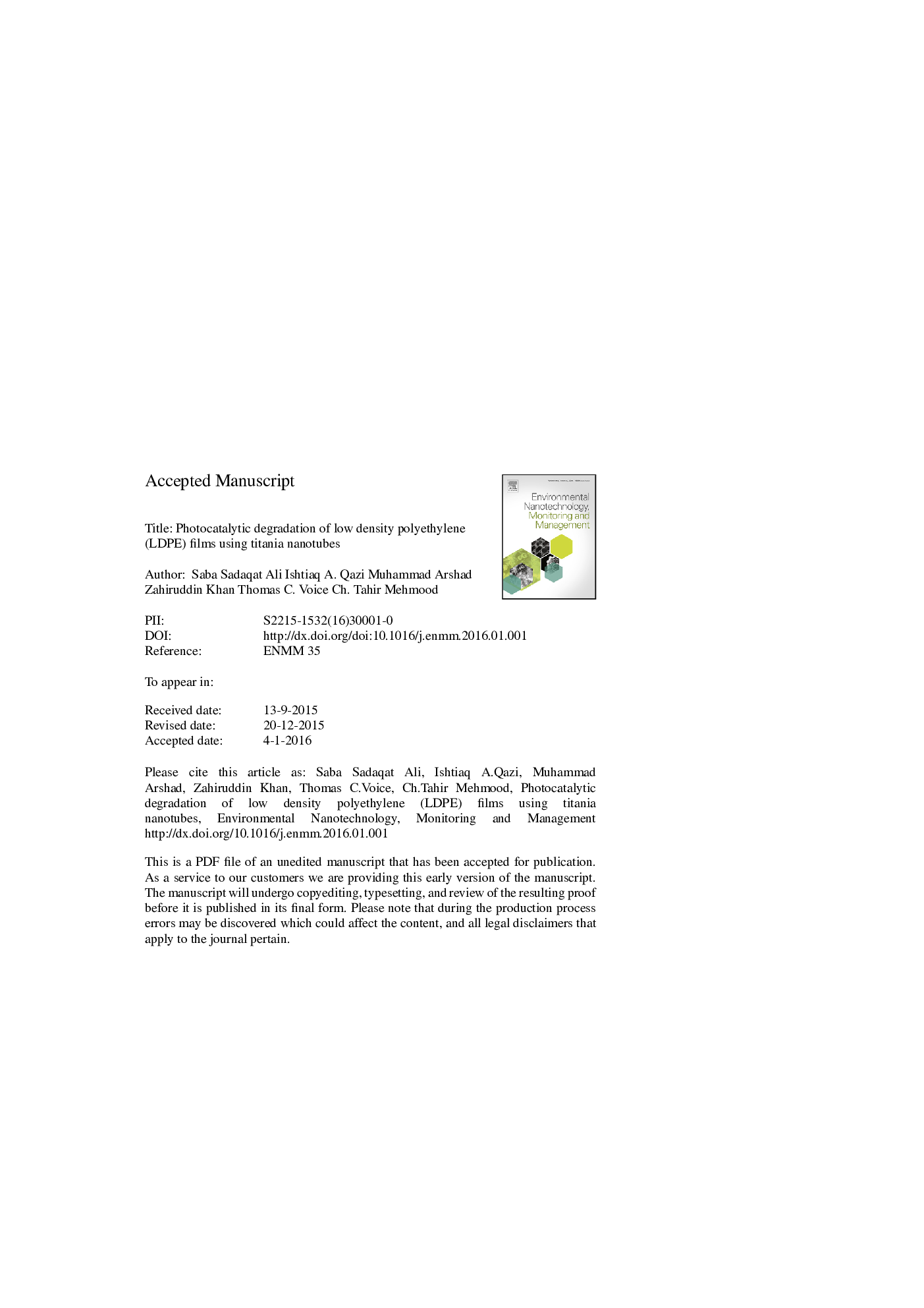| Article ID | Journal | Published Year | Pages | File Type |
|---|---|---|---|---|
| 6314514 | Environmental Nanotechnology, Monitoring & Management | 2016 | 26 Pages |
Abstract
Polyethylene (PE) waste disposal is a major issue now a days that poses serious threats to human and environmental health. Among the methods of dealing with problem, photocatalytic degradation in the visible light is an alternative option that has received attention recently. The photo catalyst, generally used, is titania in the nanoparticle form. In the current study, complexity of employing a larger surface area nanomaterial in the form of titania nanotubes has been investigated. Prepared nanostructures were characterized by SEM, EDS, XRD, BET surface area measurements and UV-visible spectroscopy. Taking a lead from the work done for the development of dye sensitized solar cells, blue green dye was used to sensitize the TNTs with very encouraging results. The degradation of pure and composite PE films was measured in terms of photo-induced weight loss and was confirmed by FTIR, SEM, surface roughness and tensile strength testing. Thus, polyethylene films with 10% dye sensitized titania nanotubes showed a degradation of around 50% under visible light over a short period of 45 days.
Keywords
Related Topics
Life Sciences
Environmental Science
Environmental Chemistry
Authors
Saba Sadaqat Ali, Ishtiaq A. Qazi, Muhammad Arshad, Zahiruddin Khan, Thomas C. Voice, Ch. Tahir Mehmood,
